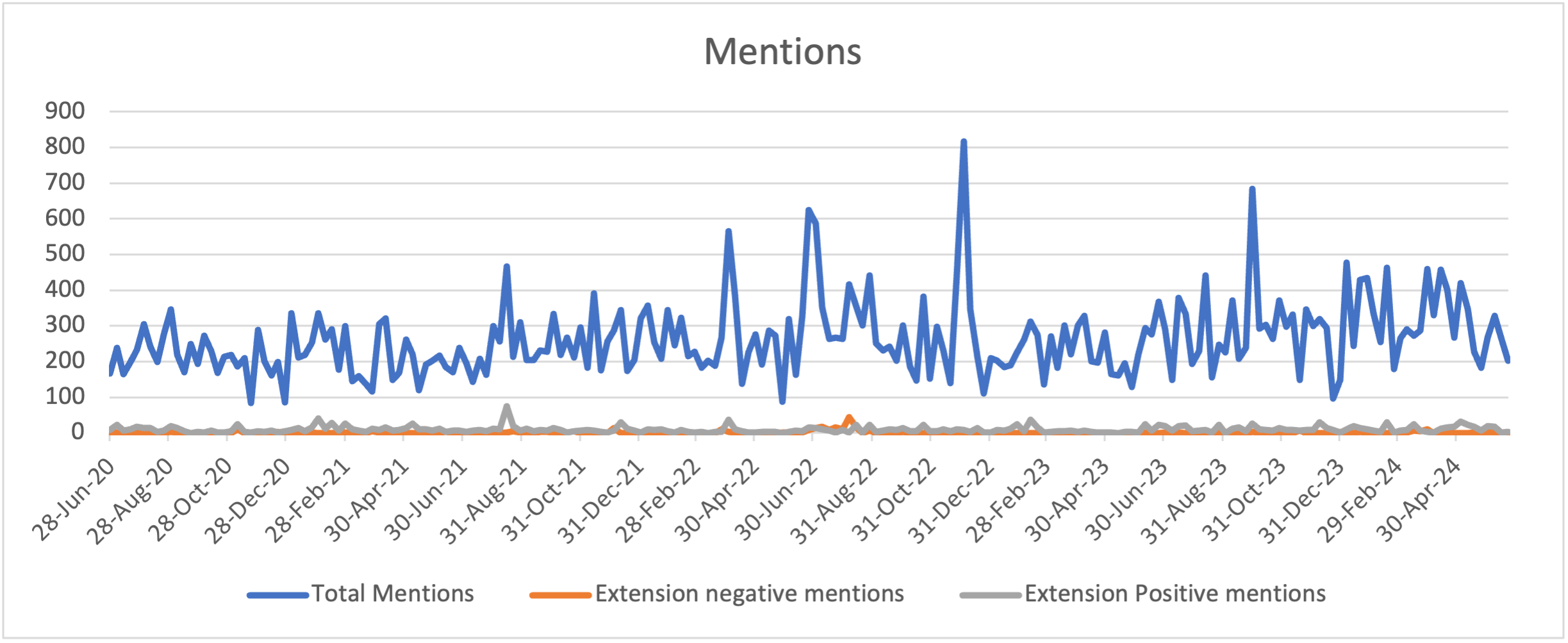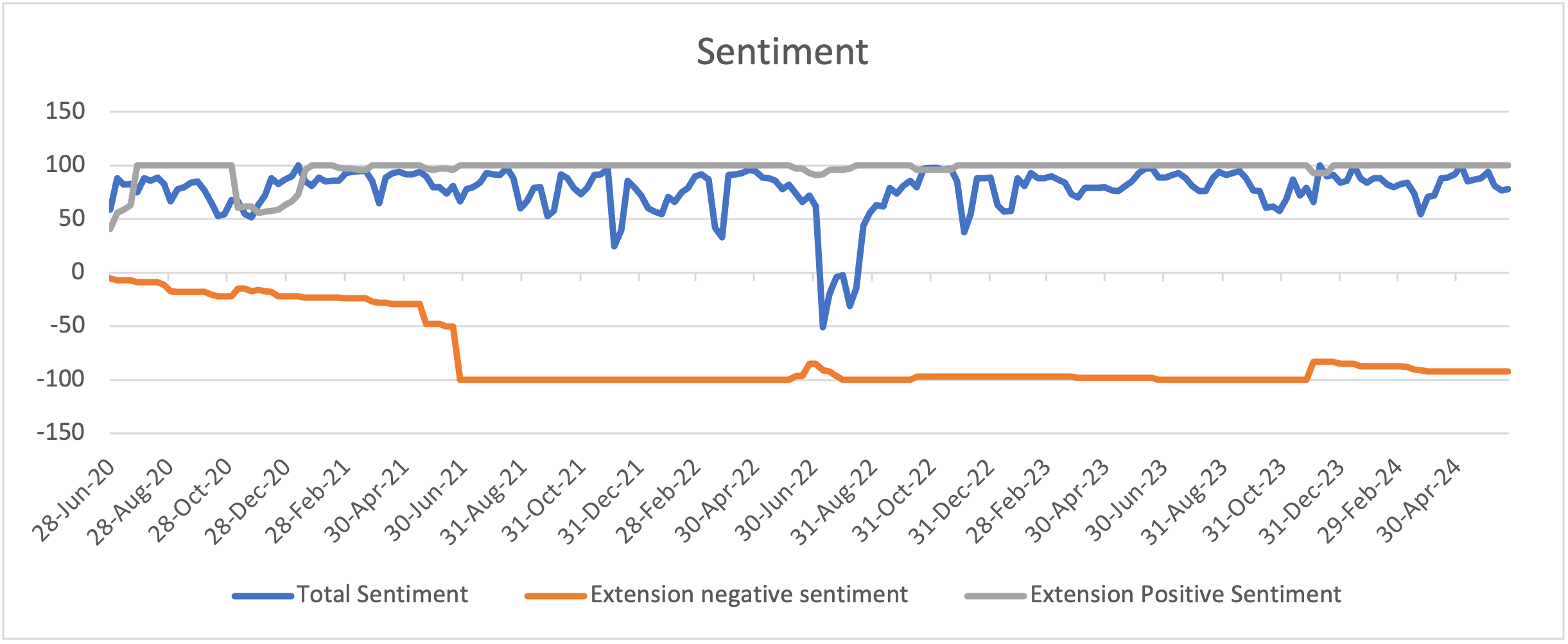Consumer Corner is BACK in 2025! We’ve updated our platform with new features, making it easier to search content, find you favorite past posts and revisit missed conversations. All content since 2020 remains available, and we’re building on those discussions with fresh insights.
Over the past five years, we’ve explored decision-making, market dynamics (both intentional and unexpected) and the role of data and analytics in driving business choices. In 2025, we’re back to a monthly posting schedule and the same core mission: to challenge how consumer research, human behavior and economics inform decision-making. Lessons can be learned from non-traditional places, such as customer service, social media algorithms, even casinos. What insights can we apply to agribusiness? Let’s keep exploring.
Acknowledgements: We would like to thank everyone who helped us collect data for this project, including: Austin Berendam, Anam Ali, Sachina Kida, Zack Neuhofer, Maria Berikou, Lauren Bales, Alyx Fisk, Luke Grieser
Branding, creating a unique identity for a product or organization in the minds of consumers, isn’t new. It’s an opportunity to tell a story, highlight competitive advantages and differentiate a product or organization. Social media in the 21st century has yielded many changes. For businesses it has opened new doors to branding and direct interface with customers. It allows for a two-way relationship between brands and consumers, and unlike traditional customer service interactions, today’s brand representatives can engage in active dialogue or passively observe what consumers say about them without being prompted. Herein lies one key advantage to social media studies: unlike survey methods, the feedback is usually completely unprompted. Social media data also typically enables researchers to collect large samples, which helps us to be more confident in our findings.
Social media allows for real time observation of how consumers react to events, whether good or bad. Waves of bad press proliferating on social media have become a common brand emergency for marketers. Social media provides organizations with the most current view of consumer reactions to emergencies, which may constitute very negative press concerning the brand. A study of social media data on foodborne illness, for example, found that initial notice of foodborne illness generates more social media activity than a subsequent recall.
Social media also enables consumers to comment on and rate their experience at an establishment. Ideally, a system like this is generally assumed to function so that only those who have used the product, service or visited the place of business provide reviews. In practice though, this does not seem to be the case. The motivation to procure positive reviews for one’s own brand, or to slander another brand, lies in the perceived value of online reviews. What has emerged is a cold war of escalating efforts by reviewer sites to remove fake reviews, and efforts by others to promote fake reviews.
The value of reviews is found to be positive in revenue, for example on Yelp’s 5-star system, research has found that an increase in 1 star can yield 5%-9% increase in revenue. The measurable value of these reviews comes from prospective customers relying on social media to research products and brands before making a consumption decision.
Despite concerns about fake reviews, social media usage becomes more involved in shaping consumer perceptions. As a result, brand managers monitor not only mentions of their products and organizations but also the sentiment behind these reviews and comments. Sentiment might refer to the tone of a comment or post, as well as the context in which it has been used. Increasingly, social media mentions, and sentiment are viewed as a key performance indicator for brand managers and an organization’s overall health. To quantify metrics related to mentions and sentiment, we track the counts of mentions of our university programs, analyze them by assigning positive or negative sentiment scores and present a net sentiment score – a ratio of positive to negative scores taking on values -100 to 100.
Universities are in growing competition for a reduced student population. While they often have similar goals, universities often pursue different ways of achieving them. Many universities have joined other brands in launching social media accounts to promote their identity, engage in conversation with users, and monitor consumer mentions and sentiments regarding their institutional brand. Increasingly, colleges, departments, and research units might launch their own social media accounts. Additionally, faculty members and high-ranking administrators might create accounts to highlight their performance and to quickly and efficiently disseminate information.
Universities are home to large, complex and diverse communities, hosting a myriad of events, from educational programs to sporting events. Recently, in times of social stress, universities have become the central location of debate. One example of this is the COVID-19 pandemic, in which universities were forced to rapidly embrace digital technologies to promote online and distance learning. Protestors may flock to public universities to exercise their first amendment rights, and the actions of a university in times of crisis or strain will often receive attention far beyond the campus community.
This Consumer Corner reports a data collection of news and social media mentions of the Purdue University brand. Using our established methods for collecting posts, we searched for online media mentioning Purdue’s College of Agriculture Extension Programs. To be included, posts had to be in the U.S., in English and posted between July 1, 2021 and May 1, 2024. We explored the weighted and value of the College of Agriculture social media activity and examined how Purdue’s research and extension mission materialize on social media.
Top Domains Where Posts Were Found
| 2021 | 2022 | 2023 | |||
| Domains | Mentions | Domains | Mentions | Domains | Mentions |
| twitter.com | 3880 | twitter.com | 4600 | twitter.com | 4120 |
| rssfeeds.jconline.com | 330 | facebook.com | 537 | facebook.com | 572 |
| 953mnc.com | 297 | farmprogress.com | 333 | ag.purdue.edu | 563 |
| newsandtribune.com | 291 | rssfeeds.jconline.com | 267 | morningagclips.com | 388 |
| farmprogress.com | 289 | cs.trains.com | 263 | 1010wcsi.com | 373 |
| wbiw.com | 203 | morningagclips.com | 244 | hoosieragtoday.com | 332 |
| 1010wcsi.com | 197 | 1010wcsi.com | 223 | extension.purdue.edu | 282 |
| extension.purdue.edu | 193 | prnewswire.com | 210 | stories.purdue.edu | 281 |
| prnewswire.com | 188 | purdue.edu | 166 | on3.com | 248 |
| morningagclips.com | 185 | 953mnc.com | 164 | purdue.edu | 228 |
University extension programs are an integral component to the land grant mission and dedicated to promoting lifelong learning by using universities as a mechanism for dissemination of knowledge and practices. Purdue University is a land grant institution, in part funded by the Morrill Land Grant Act, which requires extension among its recipients (Purdue University 2024). Purdue University is one of few institutions to still offer extension offices at the county level, instead of offering at aggregated regional offices.


Quantified mentions and sentiment scores of social media posts about the Purdue brand indicate that there is a strong interest in Purdue’s College of Agriculture and extension activities but that these are also overshadowed by the brand power of Purdue University athletics, which is common for higher education institutions. Notably, there was one major deviation from positive sentiment around June 2022, possibly caused by the state implementing a requirement that farmers market vendors obtain a food handling certificate.
Understanding how you’re seen by the outside world is key to effectively connecting with your audience. This was just one small step into understanding the volume and tone of online media surrounding Purdue’s College of Agriculture’s Extension program and activities.
ConsumerCorner.2025.Letter.02






